How to conquer the magical Margherita Peak of Rwenzori Mountains
The Rwenzori Mountains National Park covers nearly 100,000 ha in western Uganda and comprises the main part of the Rwenzori mountain ranges which includes Africa's third highest peak (Mount Margherita: 5,109 m).
TRAVEL RWENZORI
Among the top 10 national parks of Uganda is the famous Rwenzori Mountains national park located in western Uganda which attracts mostly the mountaineering travellers that select to visit Uganda for trekking tours in Uganda.
The Uganda National Parks are managed by Uganda Wildlife Authority (UWA) which corporate body is created by the act of parliament by 2000 not forgetting that Rwenzori Mountains national park is among the protected areas for the conservation of the flora and Fauna with over 400 species of birds.
The Top visited national parks in Uganda are Bwindi impenetrable forest national park & Mgahinga National park that host the mountain gorillas which are only found in Uganda, Rwanda and DR Congo. While Planning the Rwenzori Trekking experience in Uganda requires you to know more information about the park.
Facts about Rwenzori Mountains National Park
The Rwenzori Mountains National Park covers nearly 100,000 ha in western Uganda and comprises the main part of the Rwenzori mountain ranges which includes Africa's third highest peak (Mount Margherita: 5,109 m).
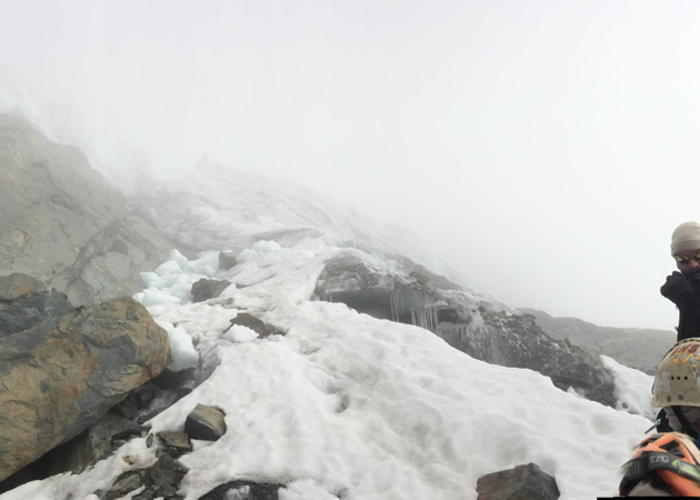
This Peak of Margherita is the dreamt of by any Rwenzori trekking travellers or safari planners planning to explore Rwenzori mountains national park. The region's glaciers, waterfalls, and lakes make it one of Africa's most beautiful alpine areas to visit when planning a summer vacation in Africa with mountaineering as the main activity.
Rwenzori National Park has many natural habitats of endangered species and a rich and unusual flora comprising, among other species, the giant heather.
The Rwenzori Mountains National Park provides stunning views of the glacier and snow-capped mountains just kilometres from the equator, where it is contiguous with the Virunga National Park in the Democratic Republic of Congo (DRC). Having the third highest mountain in Africa at 5,109 m (after Kilimanjaro and Mount Kenya), the Park includes a much larger alpine area than either, covering an area of 99,600 ha of which 70% lies at over 2,500 m in height.
The Rwenzori Mountains are the highest and most permanent sources of the River Nile and constitute a vital water catchment. Their multitude of fast-flowing rivers, magnificent waterfalls, and stratified vegetation make the property exceptionally scenic and beautiful.
The mountains are well-known for their unique alpine flora which includes many species endemic to the Albertine Rift in the higher altitude zones including giant heathers, groundsels and lobelias. The Park also supplies local communities with various wild resources and is an important cultural heritage.
Park Size
Almost 1,000 km2 (386 sq mi) in size, the park has Africa's third highest mountain peak and many waterfalls, lakes, and glaciers.

Creation as Park
Rwenzori Mountains National Park was established in 1991.
History before it was opened
Rebel militias occupied the Rwenzori Mountains from 1997 to June 2001. The park was inscribed on UNESCO's List of World Heritage in Danger between 1999 and 2004 because of insecurity and a lack of resources in the park.
Peaks that form the Rwenzori Mountains.
The Rwenzori Mountains with a range of 120km comprise of various mountains like Mount Baker (4843 meters), Mount Speke (4890 meters), Mount Stanley (5109 meters), Mount Luigi di Savoia (4627 meters), Mount Gessi (4715 meters), and Mount Emin ( 4798 meters) which are separated by deep gorges.
Mount Stanley which is the tallest mountain has several summits whereby the highest point is Margherita peak. As you hike to these mountains, the vegetation keeps changing in relation to the altitude.
Vegetation Zones of Rwenzori Mountains
There are various Vegetation covers that are found on the Rwenzori Mountains; these can be experienced by the trekkers when hiking to the top of the mountains of the moon.
The Rwenzori Mountains National Park is known for various vegetation, ranging from tropical rainforest through alpine meadows to snow. The range supports its own species and varieties of giant groundsel and giant lobelia and even has a 6 metres tall heather covered in moss that lives on one of its peaks.

The montane forest
This vegetation lies between 1800 - 2500 meters above sea level. The tree size is moderate and the forest canopy seems to be broken. The common trees in this area include; the yellow wood tree, red stinkwood, podocarpus milanjianus, Symphonia globulifera which has waxy red flowers, vernonia adolfi-friderici. The wild banana, tree ferns, begonia, and balasms among others.
Bamboo Zone
This lies between 2500 -3000 meters on gentle slopes with good soil. The ground is always covered by thick litter of bamboo leaves. On steep and rocky slopes the bamboo is replaced by tangled undergrowth consisting of an Acanthus-type shrub, Mimulopsis ellioti.
A giant lobelia, lobelia gibberoa, grows in wet and swampy places. Giant heathers, philippia johnstonii and Erica kingaensis grow on narrow ridges. Helichrysum everlastings begin to appear in this zone. The bamboo flowers at intervals of about thirty years. Some of the trees in montane zone as well grow among the bamboo and undergrowth some of which include; hagenia abyssinica (a spreading tree with yellow flowers), podocarpus milanjianus, Dombeya sp, Afrocrania volkensii, Maesa lanceolata, and Dracaena aframontana.
Shrubs and herbaceous plants are so many some of which include the Rwenzori blackberry, tree fans, and crimson flowers among others.
Heather zone
The heather zone lies between 3,000 - 4,000 metres and the heather forest only grows where the soil is poor, on ridge tops, rocky and moderately boggy places. The tree stems and the ground are covered in thick Sphagnum moss: branches are draped in Usnea beard lichens.
Some of the plants in this zone include; the coral pink ground orchid, Disa stairsii, and a red and mauve balsam, impatiens runsorrensis. There are many philippia trimera and Erica kingaensis tree heathers, which occasionally produces pink flowers. The valleys are covered with huge bogs that are almost fully occupied by carex runsorrensis which grows in tussocks.
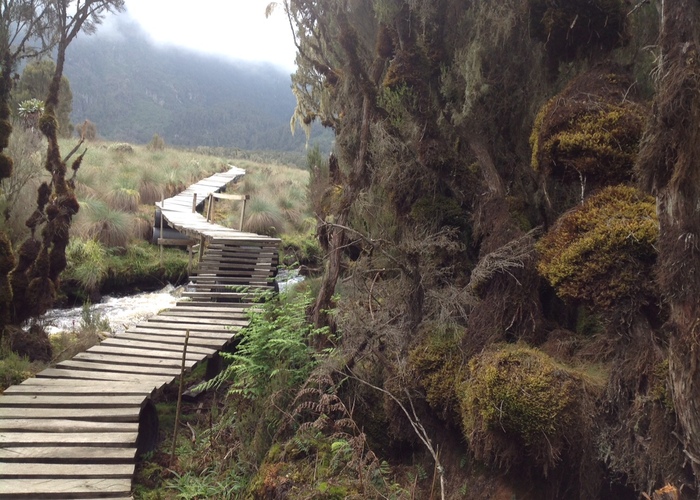
Between the tussocks, the ground is covered with Sphagnum moss and the fine lobelia can be seen. On well-drained slopes, there is mixed woodland consisting of small shrubby trees with rhododendron like leaves among others. Groundsel trees and lobelias are found in this zone. The undergrowth consists of everlasting flowers and moss.
Wildlife Animals to see in Rwenzori Mountains National Park
The park's wildlife varies with elevation, and its species include the forest elephant, chimpanzee, hyrax, black-and-white colobus, L'Hoest's monkeys, duiker, and Rwenzori turaco.
Conservation
The park is owned by the Ugandan government through Uganda National Parks. It is protected, although extraction may be sanctioned by a board of trustees. Kasese, 437 km (260 mi) west of Uganda's capital Kampala, is the gateway to the park
Recommended Trails for Trekking Rwenzori
Rwenzori Mountaineering service Safari booking agent for all trips to Rwenzori Mountains national park recommends and do book treks using the various trails.
Check on the Available Trails.
The central circuit Trail
This Rwenzori Central Circuit is not challenging as the Kilembe Trail, This trail is the traditional ones and the oldest within the national park that has been used by various trekkers who visited Rwenzori before 2009. It's managed by Rwenzori Mountaineering services with all its trek starting from Nyakalengija, 22 Km from Kasese off the Fort portal Road.
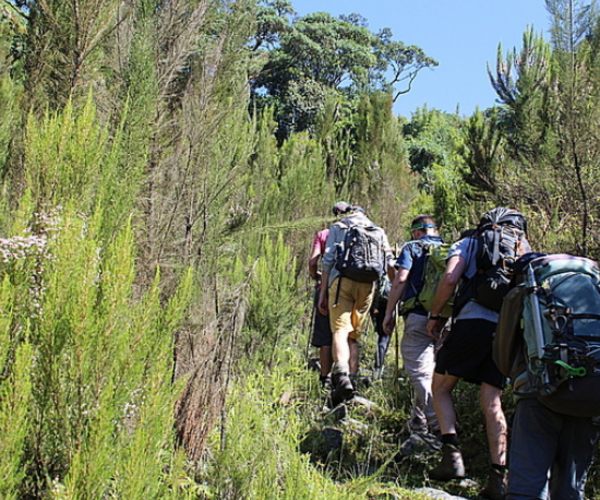
There is a campsite and safe parking near the office. From Nyakalengija, it's a 10Km, Just from the trailhead at the Mihunga; the route raises the Bujuku Valley via Nyabitaba for the acclimatization before arriving at the peaks.
Where you will join the central circuit after the Bujuku that passes the Scott Elliot as well as a fresh field that goes through the Mubuku Valley. It's the only trail that can make 7 days Rwenzori trek top the Rwenzori mountains.
Kilembe Trail
The recent one that was opened in 2009, Kilembe trail that rises in the southern slopes of the Rwenzori from a trailhead at the Kilembe just near the town of Kasese. This route is along the Nyamwamba Valley that goes through the glacier lakes and the spectacular viewpoints before joining the central circuit at Lake Kitandara. The standard route also shows Mount Baker has got scenery that makes shorter treks.
Rwenzori Trekking tours using the Kilembe trail are more expensive than the Rwenzori Central circuit which is locally managed >>>>>> expect high price when using the Kilembe and the most recommended days to reach to the top of the snow-capped mountain and back is 9 Days Rwenzori Trekking experience.
Mahoma trail
Ascending from Nyakalengija in Mahoma trail walking through the rainforests along the Kyambogho ride where Mahoma offers you an opportunity to have a scenic view of the Mubuku valley and the Rwenzori Mountains.
As you move, you will expect s to see blue monkeys, colobus monkeys, some birds like the Rwenzori Turaco, three-horned chameleons. Having a long night from Omuka Kizza, you continue with the trail as moving through the bamboo and heather forest, this is where you expect to see some forest elephants or their footprints in this area…
Rwenzori Mountains Cultural Trail
A short hiking adventure where you explore Mountain Rwenzori National Park and Culture of the people around the park. Therefore visiting culture tour and Nature walk to Rwenzori offers you an opportunity to see different trails with an experienced guide from the locals.
Enjoy the cold breeze of Rwenzori spiced by the roar of the boulder-filled River Mubuku where elated rewarding experience beings with eye-catching view of gigantic tree covered by the green canopy of giant ancient trees and plants through luxury lovely forest…
Bulemba Ihandiro Cultural Trail
Visiting the numerous sites of great cultural value to the traditional occupants of the Rwenzori Mountains known as the Bakonzo people. Gazetted in 1991, the Rwenzori Mountains National Park is one of the UNESCO World Heritage Sites in Uganda (designated in 1994), covers an area of over 1000 square kilometers (386 square miles) and is popular for harboring Africa's third-highest Mountain peak as well as numerous Lakes, waterfalls, and glaciers.
It is also a home to several mammal species such as forest elephants, hyraxes, primates like black and white colobus monkeys and L'Hoest's monkeys and many others as well as several bird species including the Rwenzori Turaco, the Rwenzori batis and the Archer's Robin-chat among others…
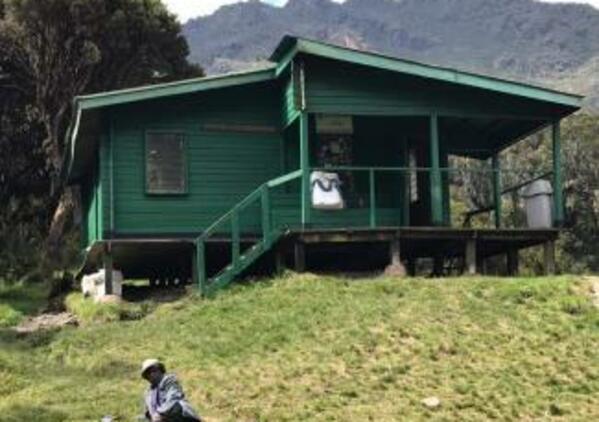
Recommended Tours for Rwenzori Trekking
Most the travellers that select to visit Uganda mainly the Rwenzori mountains always want to add in an extra safari activities that are enjoyed while in Uganda since the trips are done once and lifetime memory: Rwenzori Mountaineering service a destination manager for booking all trekking trips to Rwenzori mountains recommends that its worth to add four activities in one safari holiday to Uganda since they are connected and near to each other. Among these include gorilla trekking, Wildlife Watching, Chimpanzee Tracking & Famous Rwenzori trek (12 Days Uganda Gorilla watching & Rwenzori Trek).
12 Day Uganda Gorilla & Rwenzori trekking experiences.
The 12 Days Uganda Gorilla Watching & Rwenzori Trek is the most recommended safari for travellers planning a Uganda safari with the main focus on Gorilla trekking in either Bwindi impenetrable forest national park or Mgahinga National Park which is the most dreamt safari activity in Uganda.
(Gorilla trekking, In the Bwindi Impenetrable National Park live the last mountain gorilla population. As the gentle and peaceful giants allow us to have people around them, you are fortunate enough to be able to observe, photograph and film these animals up close.)
An extra enjoyment of Queen Elizabeth national park's wildlife watching with chances of adding lion experiential tracking which rewards to move with the lions in the wilderness of Uganda.
Rwenzori Mountains: These Mountains support glaciers and are one source of the Nile River. The Rwenzori Mountains reach heights up to 5,109 metres (16,762 ft). The highest Rwenzori peaks are permanently snow-capped.
Kibale Forest National Park: is protecting the moist evergreen rain forests. It is 766 square kilometres in size and is located between 1,100 metres to 1,600 metres in elevation. Despite encompassing primarily moist evergreen forest, it contains a diverse array of landscapes.
12 Days in the Rwenzori
Day 1: Kampala/Entebbe to Bwindi national park
Upon arrival at the airport, you will be welcomed by our guide who you will transfer to the home of mountain gorillas Bwindi Impenetrable National Park. Bwindi impenetrable National Park is also home to bird species, butterflies, primates and mammals. As you travel enjoy the beautiful scenery to get a real feel of Uganda and enjoy the terraced hills of Kigezi highlands. Lunch will be along the way or at the lodge depending on the time of arrival.
Day 2: Trekking the gentle giants of Bwindi Impenetrable National Park
On this day you will hike through the impenetrable forest in search of the endangered mountain Gorillas. After briefing from the ranger guide you start your hike into the forest, however, some Gorilla groups are away from the briefing point so your guide will drive you to the starting point.
Enjoy the day in the impenetrable forest, you have up to one hour with the gorillas once you locate them. You are advised to keep reasonable silence while watching them. Proceed to Lake Bunyonyi to relax at Bunyonyi Overland Resort.
Day 3: Transfer to Kasese-Nyakalengija
After Early morning breakfast, you will start to drive to Rwenzori National Park passing through the Queen Elizabeth national park for short game drive to search for the tee climbing lions, buffalos, warthogs, elephants, and different antelopes like waterbucks, kobs, and topi among others. You will then proceed to Nyakalengija. Check in at Equator Snow Lodge
Day 4: Nyakalengija (1600m)-Nyabitaba hut (2660m)
After breakfast at the camp, you will go to RMS headquarters where you will be briefed about the whole hike. Start the hike from Nyakalengija through the Bakonzo settlements to Rwenzori mountains national park gate where you will be registered before entering the park.
You will start the central circuit trail trek through the thick tropical with high elephant grass and dense bushes. This forest is home to various animal species like forest elephant, chimpanzee, hyrax, black-and-white colobus, L'Hoest's monkeys, duiker, and three-horned chameleons among many more.
Some of the bird species include; Handsome Francolin, Rwenzori Turaco, Long-eared Owl, Barred Long-tailed Cuckoo, Cinnamon-chested Bee-eater, Strange Weaver, Archers' Robin-chat, Rwenzori Batis among many others as well as various tree and plant species. You will expect to see some of them. Dinner and overnight at Nyabitaba hut.
Day 5: Nyabitaba hut (2660m)-John Matte hut (3420m) between 5-6 Hours
Have breakfast at the hut, you will move through thick shrubs and forest for about 30 minutes to the Kurt Shafer bright which is at the confluence of the Mubuku and Bujuku rivers. You will then move through the bamboo mixed with montane forests and slippery moss-covered rocks for a couple of hours.
As you hike you will also expect to see various bird species that live in the forest. You will continue to move up to Nyamulejju rock shelter where the first hikers used to at times camp and also spend the night, you will have a stopover here for lunch.
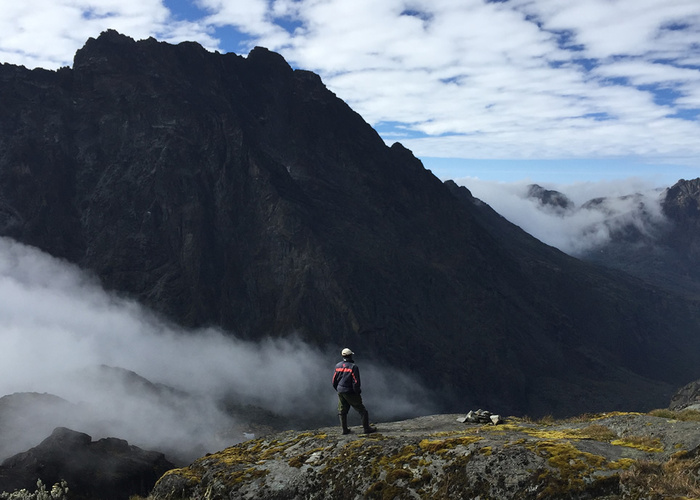
At this point, you will have a view of Mount Stanley and Mount Speke if the weather is clear. You will then continue to move through the alpine forest to John Matte hut where you will have dinner and spend the night. The hut is near river Bujuku and most hikers take a bath there, the water is so cold but so refreshing as well. You will also have a view of the Margherita glacier which is on mount Stanley between Alexandra and Margherita peaks.
Day 6: John Matte hut (3420)-Bujuku hut (3930m)- Between 4 -6 hours
After breakfast at the hut, you will cross river Bujuku and through the forest to the lower bigo bog. This is a swampy area in a valley and is a home to the giant lobelias. This area used to be hardest part of the Rwenzori since the area is so boggy, jumping from one tussock to another was not so easy for most hikers more so females. Currently, there is a walk board up to the end of the boggy area which makes the walk much easier for trekkers.
As you move you will expect to see giant lobelias, everlasting flowers, and groundsels. You will then take a steep hike along a ridge which will lead you to the start of the upper bigo bog. There is also a boardwalk up to Lake Bujuku. After the boardwalk, you will try to move through the remaining small boggy area with no walk boards to Bujuku hut.
At this point, you will have a view of Lake Bujuku, Mount Speke, Mount Baker, and Mount Stanley. At this point, you are able to ascend mount Speke and Mount Stanley. dinner and overnight at Bujuku.
Day 7: Bujuku hut (3930m)-Elena hut (4563m)
Have breakfast at Bujuku hut then continue with the hike to Elena hut, which is 5-7 hours hike. You will move through the sides of the upper Bigo bog. You will then hike through the steep slopes of Lake Bujuku. Elena hut is at the rocky part of Mount Stanley and the area is too cold.
At this point, you are at the highest mountain of the Rwenzori and you will have a direct view of Mount Baker and Mount Speke. Sometimes it is hard to view these two mountains because they are covered by fog. Have dinner at Elena hut then spend the night.
Day 8: Elena hut (4563m) - Kitandara (3979m); Full Day 10-12 hours
This day you will have to wake up as early as 2am, Have breakfast at Elena hut then hike to the top of Mount Stanley, Margherita peak, through the Stanley plateau and Margherita Glaciers.
The guide will teach you how to use the equipment while on the ice. At the top, you will have a view of Irene Lake, mount Speke, and the surrounding environment. Then descend to Elena Hut for Lunch and later proceed to descend to Kitandara through the Scott Elliot pass to Kitandara, it is the most beautiful point of the Rwenzori. Have dinner at Kitandara then spend the night. If the group is big, you might spend another night at Elena hut and continue the following day.
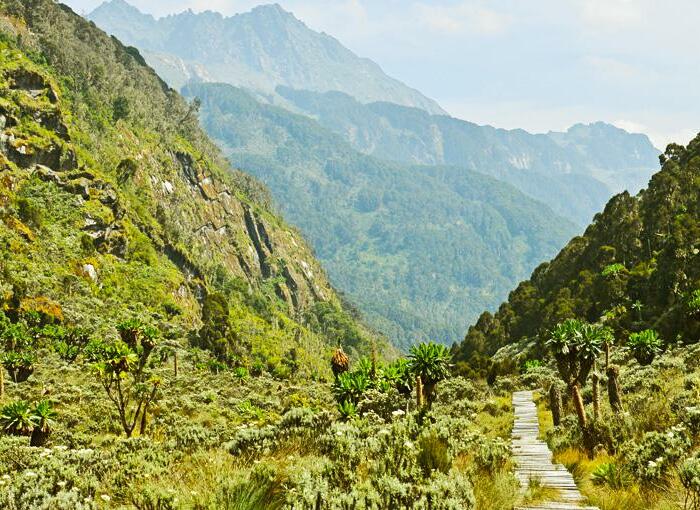
Day 9: Kitandara hut (3979m) - Guy Yeoman hut (3505m)
Have breakfast at Kitandara then move through the base of Mount Baker, which can be slippery so you will need to be so careful. From Kitandara, the trail ascends steeply up the headwall, spreading out from the base of Mount Baker and continuing along the south side of the Rwenzori Mountain to Fresh field pass. From the pass, the long muddy descent continues, passing the rock shelter at Bujangolo, The base camp for the historic expedition by the Duke of Abruzzi in 1906. This will take you around 4-6 hours then reach Guy Yeoman hut which is located at the banks of river Mubuku, have dinner and spend the night.
Day 10: Descend back to Nyakalengija- Kibale Forest
Have breakfast at Guy Yeoman hut then descend back to Nyakalengija which is about 6 hours. The Safari Guide will be ready to pick you up from Nyakalengija transfer to Kibale forest National Park passing through the crater lakes and arriving at the hotel in late evening. Dinner and overnight at Kibale Forest Camp.
Day 11: Chimpanzee tracking
On this day, you will drive to Kibale forest national park headquarters after breakfast at the lodge where you will be briefed about chimpanzee trekking and the park in general.
Apart from the chimps, the forest is a home to other primates like monkeys, mangabey, baboons, wild pigs, various fish species among others. Chimpanzee trekking can be done in the morning; which starts at 8am, mid-morning; starts at 11am and in the afternoon; starts at 2pm.
You will then start the trek through the forest to look for the chimps. Unlike gorillas, chimpanzees keep moving around the forest and jump from one tree to another as they go about their daily life.
So do not expect to find them in one place. As you trek the chimps, you will expect to see other primates that live in the forest as well as various bird species like the great blue turaco. You will then return to the lodge refresh and have lunch. Dinner and overnight at the lodge.
Day 12: Transfer from Kibale forest national park-Kampala
After Morning breakfast, you will start the journey to drive back to Kampala at a relaxing peace; Arriving in Kampala in afternoon hour. Have breakfast at the lodge at 7 am, check out of the camp drive back to Kampala and drive back to Kampala.
How to Book Rwenzori Tours
Are you interested in booking Rwenzori Trekking tours to Rwenzori Mountains National Park in South western Uganda? Visit which can be reached via https://www.rwenzoriMountaineeringservice.com or info@rwenzorimountaineeringservice.com provide prospective climbers with a comprehensive guide that contains accurate and valuable information to increase one's chance of a successful summit when climbing Mt. Rwenzori.